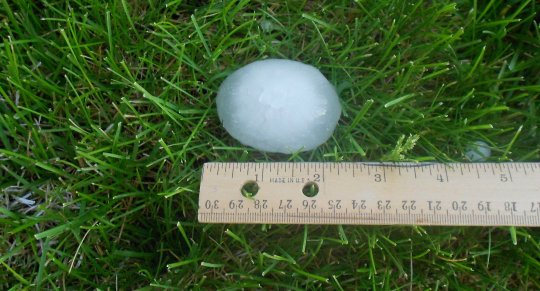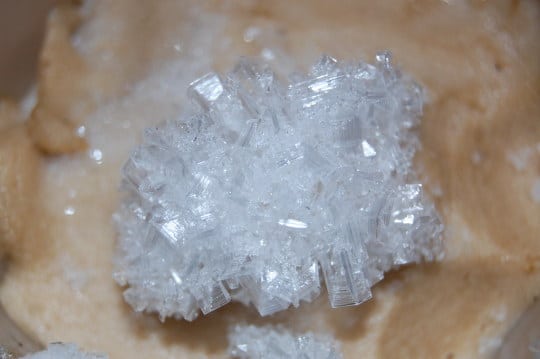by Travis Olds
Have you ever made ice cream at home?
You may have noticed that homemade ice cream has a different texture than what you buy at the grocery store or get at an ice cream shop. Homemade ice cream can taste “grainy” with a coarse texture, unlike the creamy Ben and Jerry’s from the store. This is because ice crystals in homemade ice cream are usually much larger than the ice cream made by professionals.
This is where mineralogy comes in. In nature, large mineral crystals take time to grow, sometimes growing for up to 100,000 years or more! The same is true for ice and snow, which happen to be minerals too. The shape and size of snow crystals that fall from the sky are controlled intricately by the outside air temperature, relative humidity, and time. Snowflakes are usually largest when they spend a long time in the air and at temperatures a bit below the freezing point, near 15 °F. At colder temperatures, the crystals grow quickly and are smaller. Fortunately, we won’t be seeing snow for a while, however, summer can bring even larger balls of ice from the sky! During thunderstorms, hail stones can grow VERY large (up to 15 cm or nearly 6 inches in diameter), sometimes spending up to 30 minutes swirling around updrafts in the icy and rainy conditions within storm clouds.

To make a smooth and creamy ice cream, companies like Ben and Jerry’s use freezers cooled to very cold temperatures, -40 °F, that quickly freezes the cream thereby producing tiny ice crystals. Ice cream prepared at home is made with a salty mixture of ice and water that can reach nearly -5 °F, but at this temperature the ice crystals grow more slowly and larger. When the crystal size reaches about 50 micrometers, roughly the width of a human hair, your mouth senses the coarse texture.
Three steps you can take to make creamier ice cream at home:
1. Use a higher fat content by adding more cream. More fat will “spread” out water molecules in the cream, creating more nucleation sites, or growth places, for ice and smaller crystals.
2. Using crushed ice, instead of ice cubes, will bring the ice/salt mixture to a lower temperature. Also, pre-chilling the cream and sugar before placing it in the salt bath will help speed up freezing, producing smaller crystals.
3. Use “dry ice,” or frozen carbon dioxide, available at many grocery stores, for even lower temperatures and faster crystallization. But be careful, dry ice should only be used with proper gloves and under adult supervision.
Travis Olds is Assistant Curator of Minerals at Carnegie Museum of Natural History. Museum employees are encouraged to blog about their unique experiences working at the museum.
Related Content
What Do Minerals and Drinking Water Have To Do With Each Other?
Thanksgiving and Nutritional Mineralogy
Carnegie Museum of Natural History Blog Citation Information
Blog author: Olds, TravisPublication date: June 16, 2020

